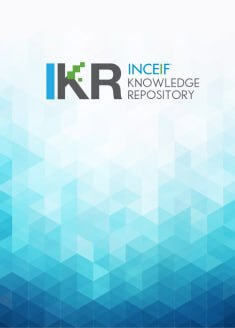
Browse by Author "Norashikin Ismail"
Results Per Page
Sort Options
- PublicationAn analysis of cost efficiency in the Malaysian takaful industryNorashikin Ismail; Syed Othman Alhabshi; Obiyathulla Ismath Bacha (Malaysian Insurance Institute, 2012)
Efficiency of financial institution has become an important part of insurance literature. This study aims to evaluate the performance in term of cost efficiency for takaful and insurance firms in Malaysia. A sample of 18 firms consisting of 7 takaful operators and 11 conventional insurers are chosen from the period 2004 to 2009. The cost efficiency score for each firm are obtained using input oriented DEA model. A Kruskal Wallis and Mann Whitney test are employed to examine any significant difference in cost efficiency between Takaful industry and insurance industry. The main findings indicate a significant difference in cost efficiency between takaful and insurance industries. The average cost efficiency for takaful industry is 49.20% which implies they could reduce the cost of production by 50% without affecting the level of output. A lower market share exist in takaful industry has resulted to cost inefficiency. Essentially, this study has supported the market power theory.
- PublicationCost, profit and technical efficiency: a DEA based comparative analysis of Malaysian takaful and insurance providersNorashikin Ismail; Syed Othman Alhabshi; Obiyathulla Ismath Bacha (INCEIF, 2011)
This study attempts to measure the relative efficiency of the takaful industry and the conventional insurance industry in Malaysia. A sample of 18 firms consisting of 7 takaful operators and 11 insurance firms is examined over the period 2004 to 2009. The study employs Data Envelopment Analysis (DEA) to estimate the technical, cost and profit efficiencies for the takaful and insurance industry ...
- PublicationOrganizational form and efficiency: the coexistence of family takaful and life insurance in MalaysiaNorashikin Ismail; Syed Othman Alhabshi; Obiyathulla Ismath Bacha (2011)
After 25 years in operation, it is time that takaful industry is evaluated in terms of its performance. One of the issues that has impact on efficiency is organization form. There have been two conflicting opinions on this issue. Eling & Luhnen (2010) opined that mutual form is efficient than stock form but Brockett (2005) concluded the opposite. This paper provides an empirical study on the relationship between efficiency and organizational structure for takaful operators in Malaysian dual financial system. A sample of 19 firms is chosen over the period 2004-2009. The selection of inputs and outputs are based on flow approach consistent with Leverty and Grace (2009). The study employed non parametric approach that is Data Envelopment Analysis (DEA) with input orientation measurement to estimate the technical efficiency for both industries. This study applied constant return to scale (CRS) and variable return to scale (VRS) to separate the scale efficiency from the technical efficiency. A Mann Whitney test is employed to examine any significant difference in efficiency between takaful and insurance industry. The findings indicate that there is a significant difference in technical efficiency between takaful industry and insurance industry. It is found that takaful has lower technical efficiency than conventional insurance. Importantly, it shows the organization form has an influence on the efficiency. Finally, the study found that the conventional insurers have higher scale efficiency than takaful industry.
- PublicationOrganizational form and efficiency: the coexistence of takaful and conventional insurersNorashikin Ismail; Syed Othman Alhabshi; Obiyathulla Ismath Bacha (Global Research Agency, 2011)
This study analyzes the coexistence of two different organizational forms of insurance, namely Takaful and conventional insurance. We analyze the efficiency of different organizational forms in 13 countries for the period 2007-2011. Technical, allocative, cost, and revenue frontiers are estimated using data envelopment analysis. We test the expense preference hypothesis and efficient structure hypothesis. We find evidence for the efficient structure hypothesis and expense preference hypothesis in selected market segments. The results provide insight into the competitiveness of conventional and Takaful insurers from different countries.
- PublicationThe state of Islamic finance in EuropeEdib Smolo; Irum Saba; Norashikin Ismail; Ziyaad Mahomed (Emerald Publishing Limited, 2024)
The announcement of the SDGs in 2015 marked a dramatic shift in global development, culminating in an age of international cooperation where the international community bands together to tackle the world's most pressing challenges. This chapter discusses the peculiar connection between Islamic financing and the SDGs and focuses on the possible harmony between these two sectors. It emphasizes the need for significant financial resources to advance sustainable development. Researchers argue it is crucial to bring digital technologies together with Islamic finance to reach sustainable economic growth through innovations like artificial intelligence (AI), blockchain, and fintech. In addition, the chapter explains core principles of Islamic finance that conform to Shari'ah, which will eradicate poverty and promote conscientious consumption. Islamic finance opens the opportunity for financially and socially excluded groups, poverty reduction, and environmental sustainability through programs like renewable energy projects. However, SDG integration with Islamic finance still poses some challenges, namely, Shari'ah scholars' understanding of the SDGs, regulatory and operational difficulties, the necessity for innovation, and measuring nonfinancial benefits. Through case studies, the authors provide pragmatic insights into successful integration processes as well as practical lessons for the concerned parties. The chapter ends by making policy recommendations grounded on active support by governments, compulsory educational initiatives, new interesting Islamic finance products, and shared efforts (or undertakings) among various stakeholders. In short, this chapter positions Islamic finance as a potent catalyst for SDGs, furnishing a sustainable economic and social development framework while acknowledging and addressing challenges on the integration journey.
Abstract View
2677221
View & Download
199181
